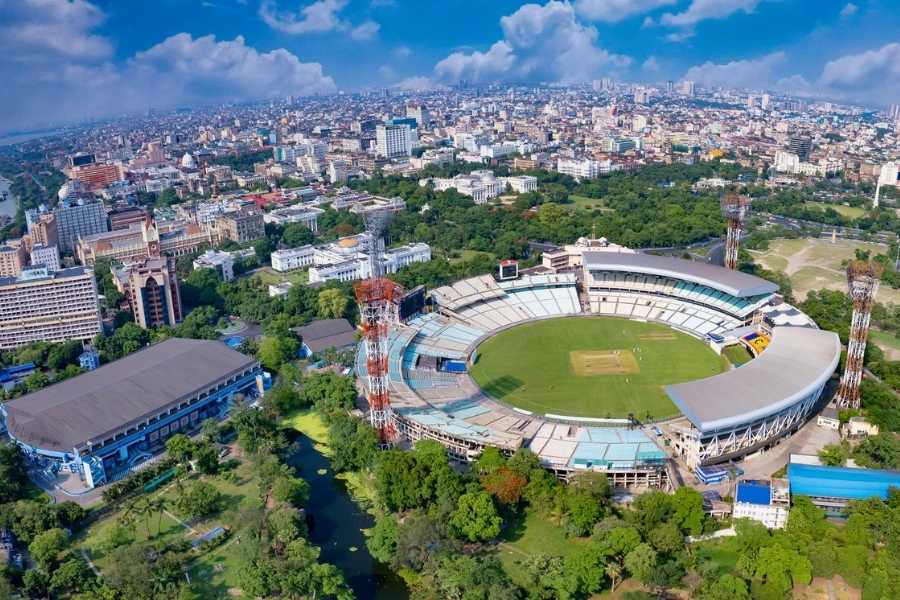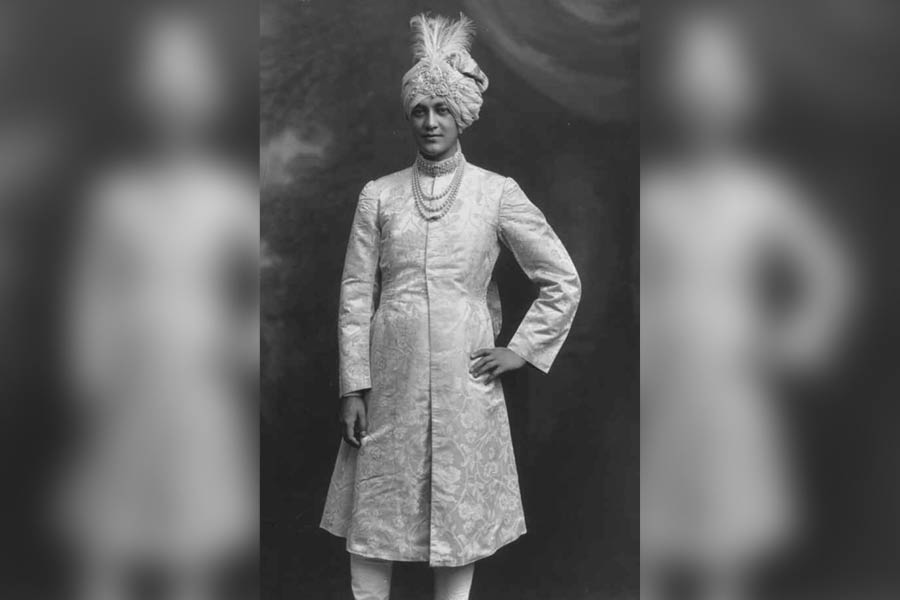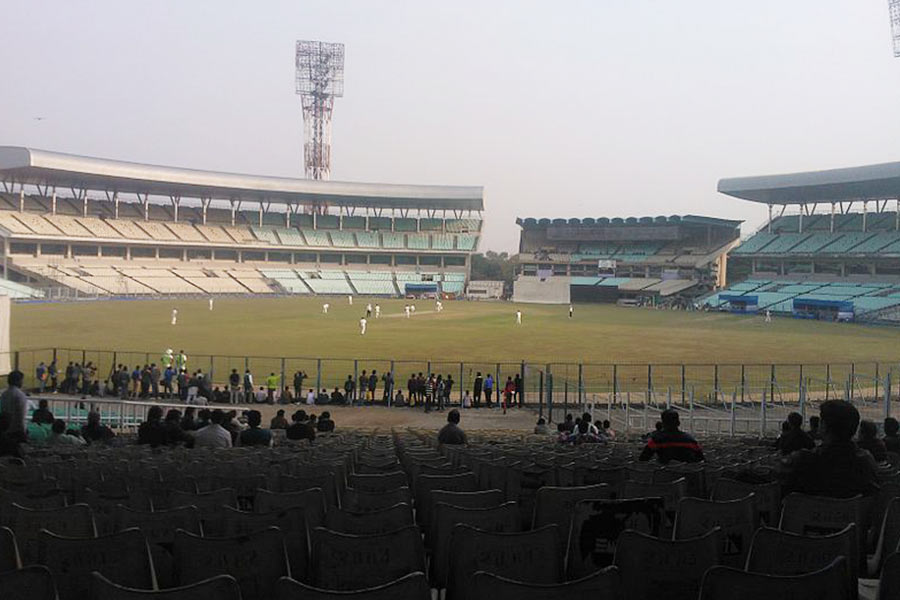Recently, the Indian cricket team won the ICC Champions Trophy, sending its fans across the world into joyous celebration. It continued a fine run of form for the side in white ball cricket, coming on the heels of the triumph at the World T20 Championships last year in the Caribbean. Today, cricket is by far the most popular sport in India and the Board of Control for Cricket in India (BCCI) is amongst the richest cricket bodies in the world.
Cricket came to our lands with the British. The first documented reference to cricket in the subcontinent comes from a journal of a British sailor in 1737, which talks of a cricket match being played in Cambay (near Baroda) in 1721 by seamen of ships at bay. As the rule of the Company spread across the subcontinent, so did the game. And by the latter half of the eighteenth century, cricket had become very popular among the royalty with the sport, along with hunting, often used to curry favors from the ruling British.
Calcutta, capital of British India till 1911, naturally thus became a major hub of cricket along with the other two Presidency towns: Bombay and Madras. And yet, by the turn of the century, football had taken command of the popular mind-space in the city and Bombay would soon leave it far behind in dominating the Indian cricket scene. Yet, Calcutta’s contribution to the growth of cricket in India cannot be over-emphasised.
The first tour
The first ever cricketing tour of the subcontinent from England took place back in 1889-90, when G.F. Vernon brought over a team of amateurs for a series of matches across India and Ceylon. The primary mover in getting the Vernon XI to India was the Calcutta Cricket Club (CCC), the dominant British-controlled cricket club in the city. The team was led by the venerable Lord Hawke, of Yorkshire and England, and after playing a couple of games in Ceylon, the party arrived in Calcutta to kick-off the Indian leg of the tour. The first match was played at the Eden Gardens against CCC. The tour was a success and was followed by another touring party two years later, led by Lord Hawke and included in its ranks FS Jackson, (later Sir Stanley Jackson) – future English captain and governor of Bengal. For this tour also, it was CCC who organised the primary sponsorships. In 1902, CCC was again instrumental in inviting an Oxford University side (titled Oxford University Authentics) for a tour of India.
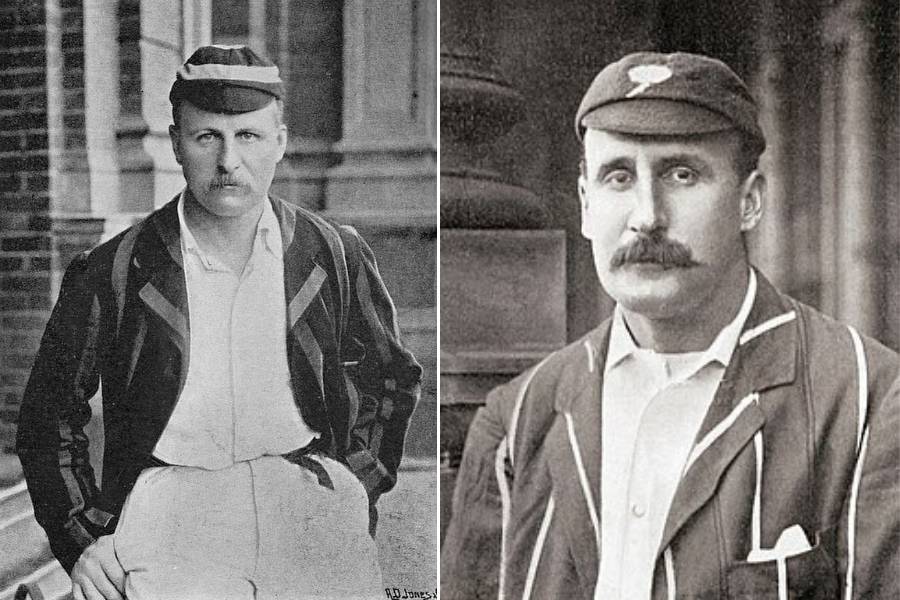
G.F. Vernon and (right) Lord Hawke
These early tours were pivotal in spreading awareness and popularity of the sport across the subcontinent. On the inaugural tour, the Parsees created a Lagaan-esque moment when they handed Vernon XI their only defeat on the tour – a win much celebrated by the locals. The Parsees were the earliest Indian community to take up the sport and gave Indian cricket its first star – Mehallasha Edulji (M.E.) Pavri, a strapping fast bowler who produced a dreamy spell of 7/34 to win the match vs. Vernon XI. Two years later, he took an 8-wicket match haul against Hawke’s XI. The success of the Parsees soon induced the Hindus to try and excel at the game, and in the late years of the nineteenth century, they found their bowling hero in the legendary Baloo Palwankar. Cricket had started to occupy the minds of common Indians.
Giving cricket in India an organised structure
Although the CCC played a little role in popularising the game among the native communities in Calcutta, its impact on giving cricket in India an organised structure cannot be overstated. A major step in this effect was taken in 1926 when the CCC sent out an impressive touring party, consisting of its president Sir William Currie and secretary Murray Robertson, to Britain. The two men had a clear and definite objective: the formidable Lord Harris. This English peer, who had led Kent and England cricket teams, had a long association with Lord’s and MCC. He had also spent time in India, holding the governorship of the Bombay Presidency from 1890 to 1895. Indeed, his enthusiastic backing was a key factor in securing the travels of the Vernon and Hawke XIs in the early 1890s.
An avid cricket lover, Lord Harris was known to have a soft corner for India, particularly for his beloved game to spread there. Lord Harris’s words were pretty much the law in English cricket and his blessings secured the Calcutta duo a seat at the Imperial Cricket Conference (forerunner of ICC) meeting at London, despite India not being a formal member of the organisation. A big fall-out of this attendance was the materialisation of the first ever Marylebone Cricket Club (MCC) tour of India. This took place in the winter of 1926 – the touring party being led by the England captain Arthur Gilligan – whose most recent laurel was winning back the Ashes in Australia.
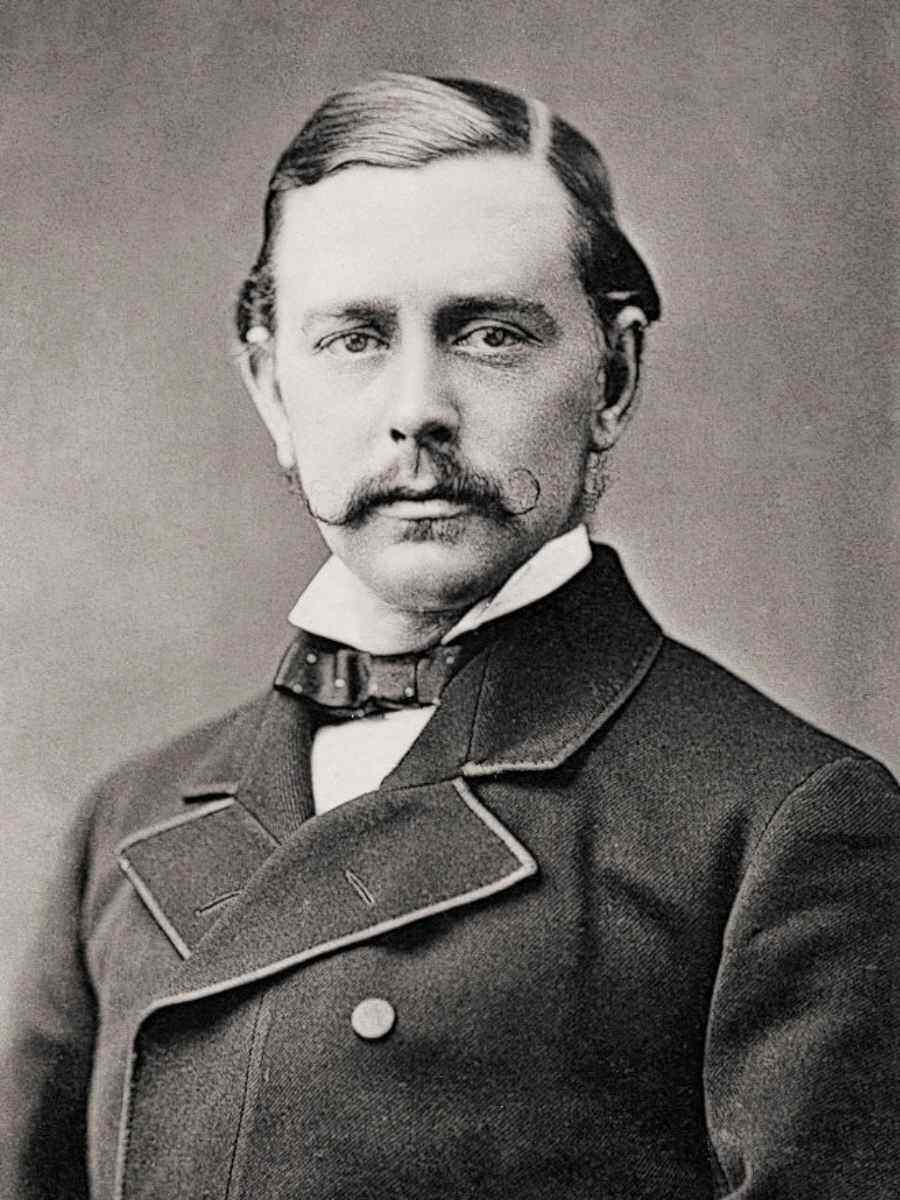
An avid cricket lover, Lord Harris was known to have a soft corner for India, particularly for his beloved game to spread there
The CCC was again the prime organiser, and this time, a series of standout performances by Indians left the MCC team, especially their captain Arthur Gilligan most impressed. The most talked about this was Col. CK Nayudu’s hurricane century for the Hindus – a dazzling knock of 153 made in just 116 minutes with fourteen fours and a new first class record of eleven sixes. There was also a masterly 148 by Dr. DB Deodhar in the first unofficial test match and a fiery spell by Ladha Ramji, which actually forced Gilligan to ask his opposite number to take Ramji off the attack!
A broad-minded man, unlike many of his contemporaries, once back in England, Gilligan became a strong advocate of allowing Indian cricket to take the next big step and with Lord Harris’s blessings, this became a reality in 1928 when India was made a new member of the Imperial Cricket Conference – and thus earning Test playing status. Gilligan, along with the industrialist R.E. Grant Govan and cricket administrator Anthony de Mello and backed by the Maharajah of Patiala were instrumental in the founding of the BCCI on December 1, 1928.
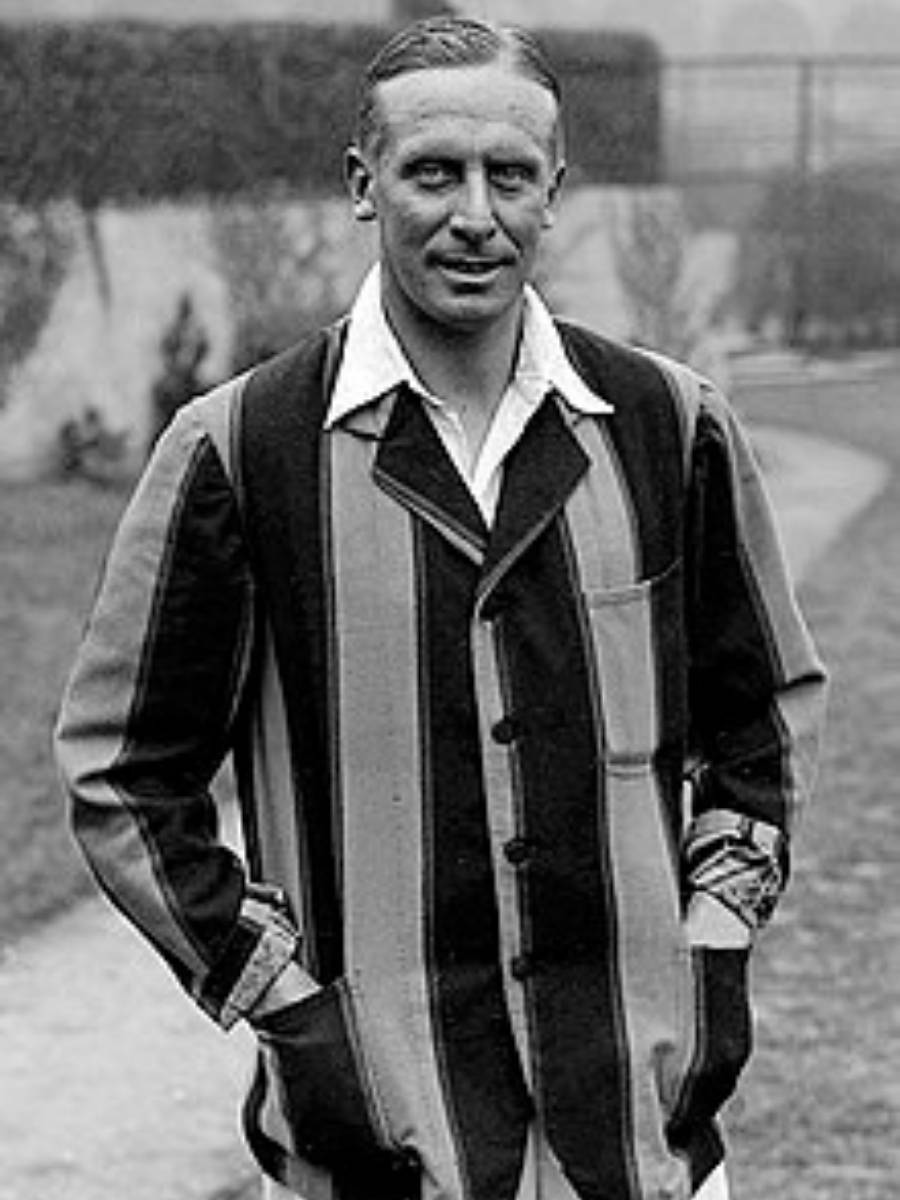
Arthur Gilligan was one of the people instrumental in the founding of the BCCI
Formation of the Cricket Association of Bengal
The same year, cricket in Bengal also received a formal boost with the formation of the Cricket Association of Bengal (CAB). Two prominent players in this initiative were Reginald ‘RB’ Lagden, a Cambridge ‘double Blue’ in cricket and field hockey who had become a major businessman in Calcutta of the 1920s and Alexander ‘Alec’ Hosie – a Hampshire cricketer who also played cricket intermittently India since the end of WWI. In 1934, the first inter-state championship of cricket was established by the BCCI. The trophy for this tournament was donated by the Maharajah of Patiala – named after KS Ranjitsinhji, the Ranji Trophy.
CAB did not take part in the inaugural edition of the tournament, but joined in the second edition in 1935-36 and made an instant impression, making it to the last four, Alec Hosie being the first Bengal captain in Ranji Trophy. He had also captained Bengal in their maiden first class match vs. Jack Ryder’s (Don Bradman’s first captain) touring Australians earlier. The next year, Hosie-led Bengal went one better, making the final. However, Hosie missed the vital game where Bengal, led by wicket-keeper Paul van der Gucht, came up short vs. Nawanagar. Hosie’s last appearance for Bengal was in the 1937-38 Ranji Trophy before he handed over the baton to Thomas Longfield, formerly of Cambridge and Kent.
An old-fashioned, classical medium pace bowler, Longfield’s father worked in Calcutta for Royal Insurance. Around 1930, Longfield arrived in the city and secured a job with Andrew Yule & Company. In the 1936/37 edition of the Ranji Trophy, he became the first Bengal player to take a first-class hat-trick (vs. Bihar). After Hosie, Longfield took over the reins of the side and struck gold at first attempt, leading Bengal to their first ever Ranji title, defeating Southern Punjab in the final played at Eden Gardens. Longfield led from the front, picking 1/68 and 4/48 in the match. A major figure in the early years of CAB and Bengal team, that victorious final was Longfield’s final bow from the Indian cricket scene. His daughter Susan, born in Calcutta, later married Ted Dexter, the legendary English batting star of the 1960s.
The CCC and most of the characters of this story have long since vanished from public memory. But their contribution into what the game has become today, in Calcutta, Bengal, and across India for that matter, deserves to be remembered.
